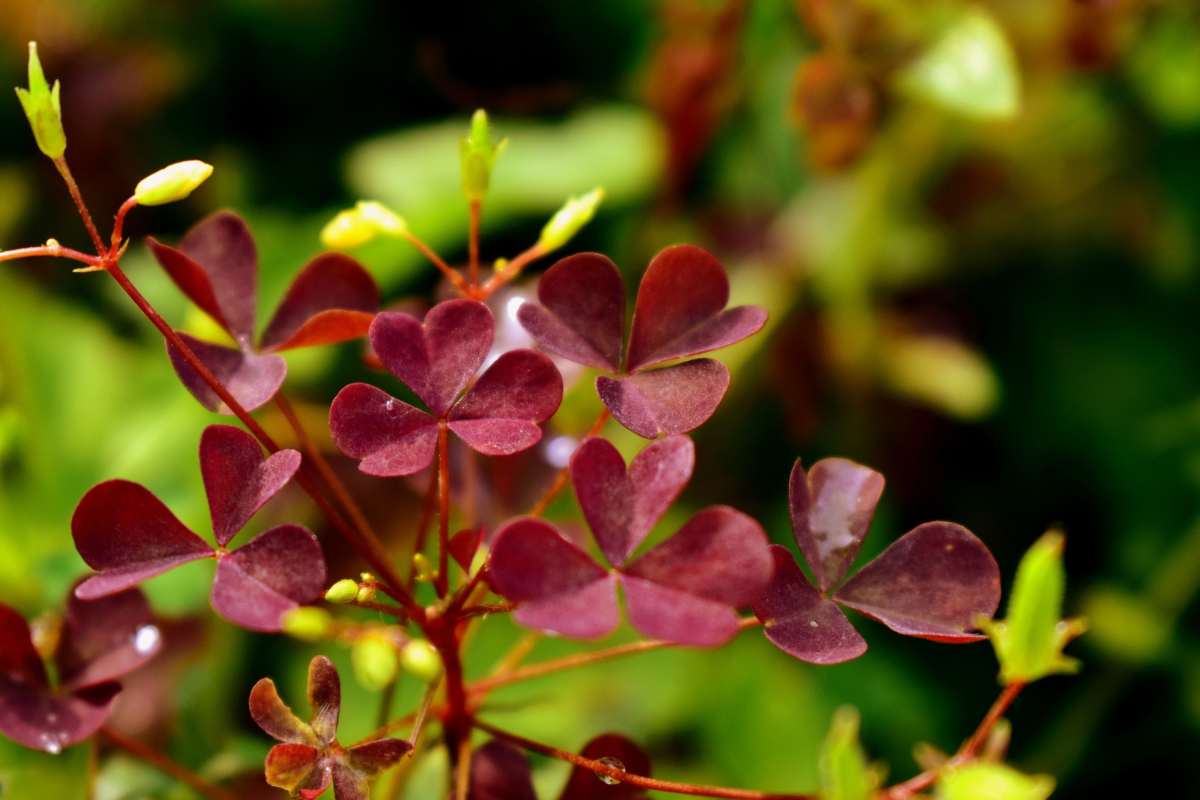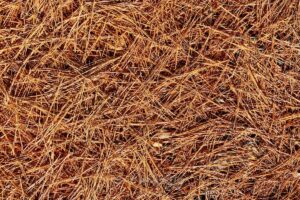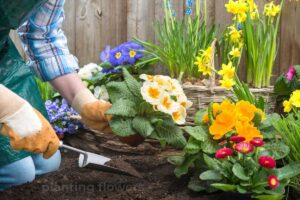This page may contain affiliate links. If you click and buy, we might get a small commission at no cost to you.
Weeds are plants that grow in places you don’t want them to, and they can be bothersome. They can also be hazardous because they can spread disease and destroy crops by competing for nutrients. And there are weeds in Colorado!
This article will discuss the various weeds that can grow in your garden in this state, as well as how you can identify and control them.
15 Weeds in Colorado
1. Prostrate pigweed
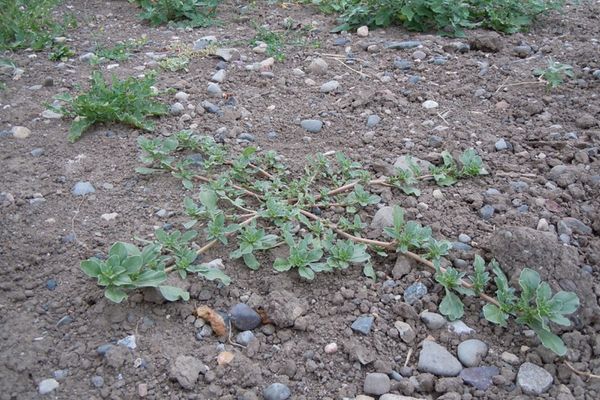
Scientific Name: Amaranthus blitoides
Prostrate pigweed is a common weed found throughout Colorado. They’re particularly common in sandy soil areas and have been known to cause issues for farmers because they can interfere with crop growth by competing for nutrients and sunlight. This plant can also produce hundreds of seeds, which is why it’s so troublesome for gardeners.
If you want to get rid of them in your yard or farm, consider pulling them out by hand, and mature ones should be bagged or burned to prevent seed spread.
2. Diffuse knapweed
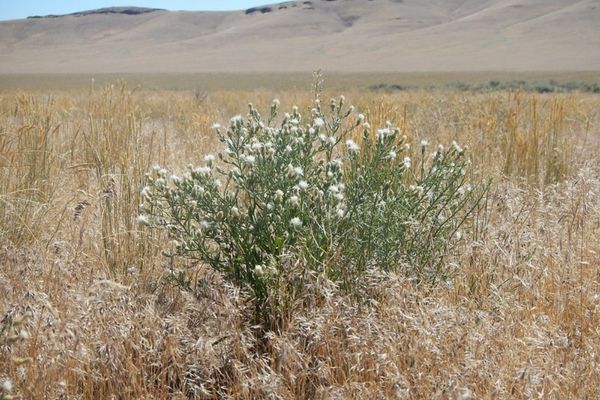
Scientific Name: Centaurea diffusa
Diffuse knapweed is a common weed in Colorado, where it thrives in the arid climate and sandy or loamy soil that covers the majority of the state. This plant thrives in dry, sunny environments with little rainfall and can withstand drought.
The bracts seen around the flower bases help to identify them. This plant dies after two years and disperses 18,000 seeds as a tumbleweed.
3. Goosefoot
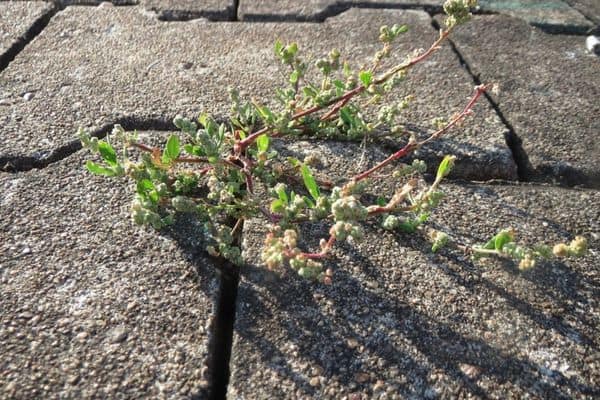
Scientific Name: Chenopodium album
Goosefoot is a common weed in Colorado that goes by several names, including wild spinach and lamb’s quarters. It grows well in a variety of climates and is cultivated as a vegetable crop in Asia and Africa.
However, if not controlled, this plant can be a weed in your garden, especially in corn, soybeans, and sugar beets. You can use pre-emergence herbicides to control this plant and keep it from spreading.
4. Kochia
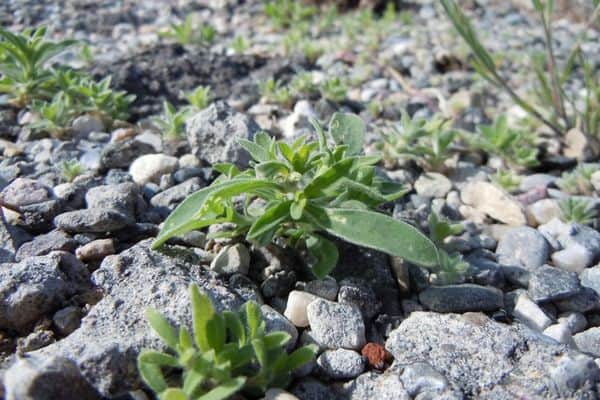
Scientific Name: Bassia scoparia
Kochia, also known as summer cypress or burning bush, is one of Colorado’s most troublesome weeds. This plant grows in disturbed areas, gardens, pastures, fields, and even on the sides of roads with alkaline soil.
As adults, these plants can grow up to 6 feet tall and have red-tinged branches and stems. You can keep Kochia from regrowing in your garden by mowing, cutting, and using herbicides.
5. Common mallow

Scientific Name: Malva neglecta
Another weed that can grow in your garden in Colorado is the Common mallow. This weed thrives in sunny, moist soil and prefers warm, temperate climates. They can be found in lawns, landscapes, and nursery crops.
This annual weed can reach a height of 24 inches and bears small pink or white flowers from early spring to mid-fall. It’s best to remove this plant before it matures because the roots become woody. This will also prevent the plant from spreading further in your yard.
6. Morning Glory
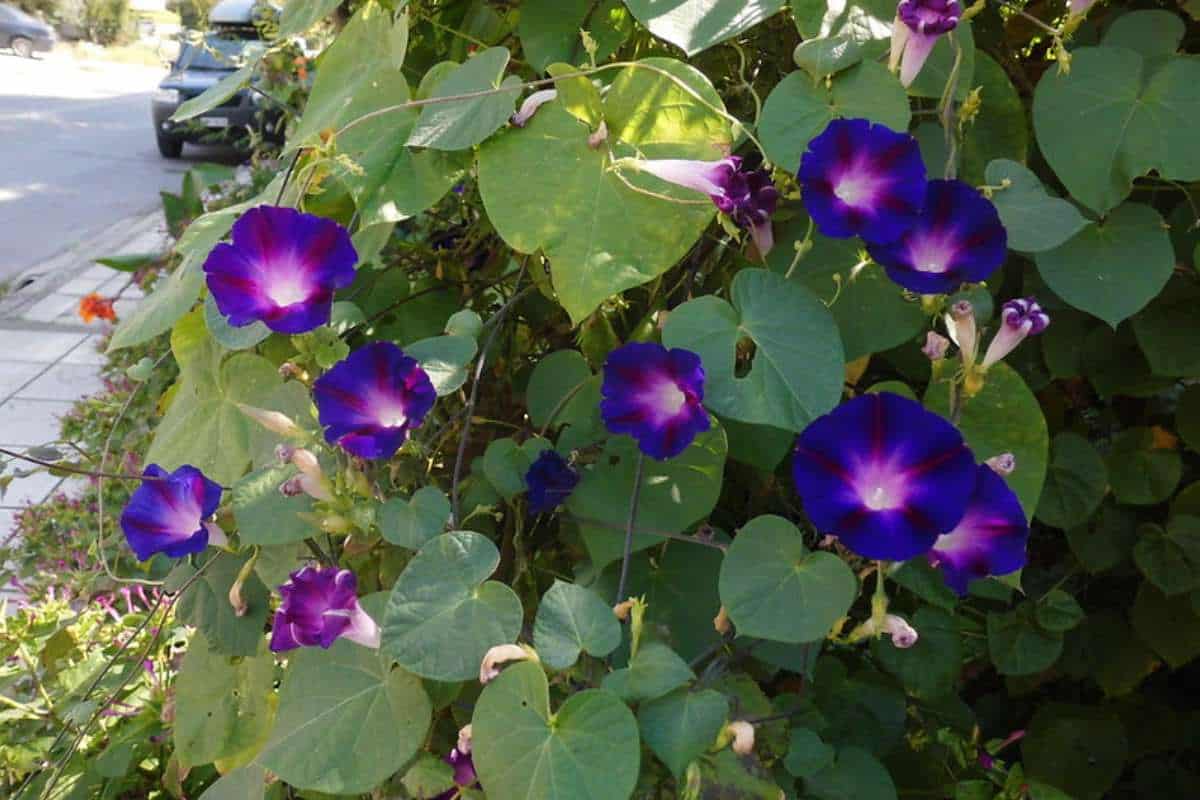
Scientific Name: Ipomoea purpurea
Morning glory is a vine that grows best in moist, well-drained soil. This weed produces beautiful purple flowers with white centers.
However, no matter how lovely this plant is, it can be a nuisance in places where it isn’t wanted. They can grow quickly and wrap around nearby trees, plants, and other objects. When trying to get rid of morning glory, you must pull it from the vine because cutting it won’t guarantee that it’ll not grow again.
7. Shepherd’s purse
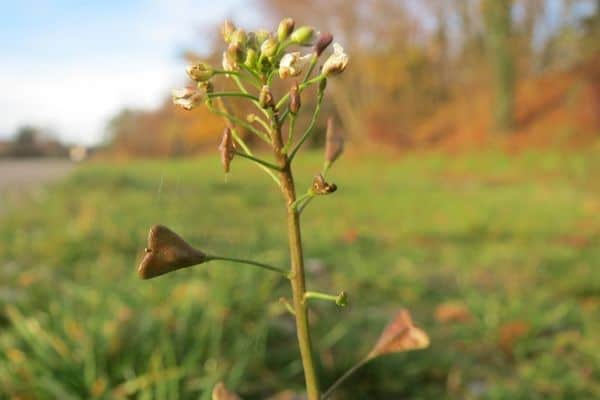
Scientific Name: Capsella bursa-pastoris
Shepherd’s purse grows best in well-drained, sandy soils with good porosity. You can also find it in lawns, gardens, old fields, pastures, roadside ditches, and waste areas.
The leaves of the shepherd’s purse are long and triangular in shape, with rounded edges and jagged edges along the edge of each leaf. It also has a long flowering stalk with white, yellow, or lavender flowers. These typically bloom between the months of May and October.
8. Hop clover
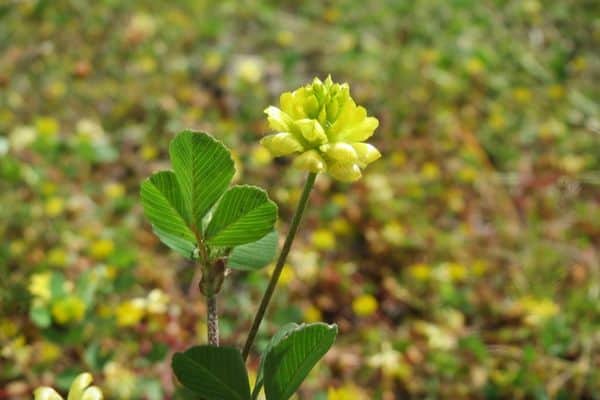
Scientific Name: Trifolium campestre
Hop clover is a common weed in Colorado, and it’s hard to miss. This clover is an annual plant that spreads by seed, so if you find one patch, chances are there’ll be more on the site.
This plant thrives in loam or clay-loam soil and is most prevalent where there is sunlight. The leaves are trifoliate, and the flowers are small and yellow, clustered at the end of each stem. They bloom from late spring to late summer.
9. Absinth wormwood
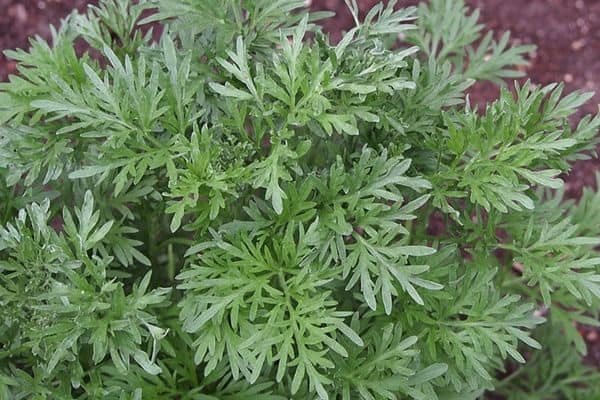
Scientific Name: Artemisia absinthium
Absinth wormwood is a perennial weed found in disturbed areas with moist soils. The plant can reach a height of 3 feet and has silver-grey leaves and small yellow flowers.
This wormwood is relatively easy to eradicate by using herbicides and continuously pulling and mowing to remove seeds in the area completely.
10. Common purslane

Scientific Name: Portulaca oleracea
Common purslane is a plant with multiple branches, fleshy leaves, and yellow flowers. This plant prefers bright, warm conditions and can be found in gardens and along roadsides.
It spreads through seeds and can grow quickly, invading the spaces of other plants. To prevent them from spreading to your garden, you can simply remove the plant and burn it or compost it.
11. Musk thistle
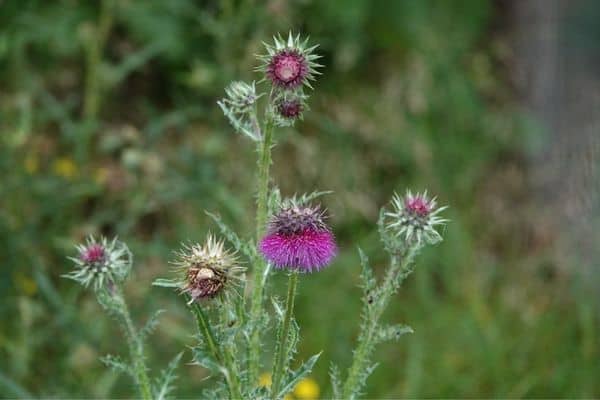
Scientific Name: Carduus nutans
Musk thistle is a plant that grows in a variety of soil conditions. They’re native to Europe but have spread to the United States and Canada, where they’re now considered a weed.
This plant produces many flower heads that are usually rose-purple in color with many bristles and blooms from mid-May to early July. Because seeds are dispersed during the flowering season, it’s critical to eradicate these plants before they flower.
12. Creeping woodsorrel

Scientific Name: Oxalis corniculate
Creeping woodsorrel is a plant that’s known for its creeping abilities, which can be problematic for gardeners. It’s a versatile plant that you can find growing in nursery crops, yards, and agricultural areas.
It blooms from May to September and has shamrock-like leaves and small yellow flowers. Creeping woodsorrel can reach a height of 8 inches. Hand weeding and the use of herbicides before the weed flowers and spread seeds can help control it.
13. English plantain
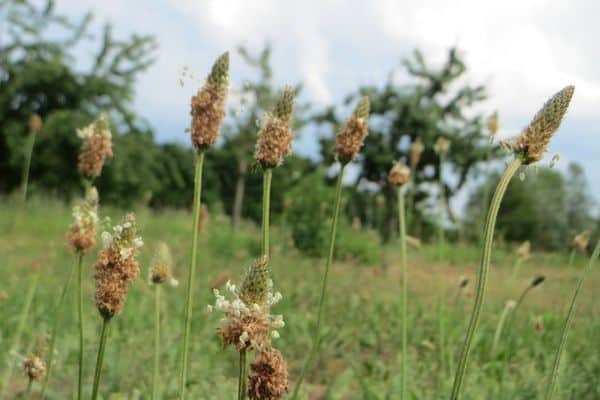
Scientific Name: Plantago lanceolata
In Colorado, English plantain is a common weed that prefers dry or moist soil. Plantains grow in clumps and have lance-shaped and ribbed leaves. English plantain has a distinct texture that makes it easy to recognize: the leaves are waxy and stiff, giving them a shiny appearance.
Plantains are invasive because they spread rapidly and compete with other plants. To avoid the further spread of plantain in your yard, try pulling the entire root by hand and making sure nothing is left behind.
14. Quackgrass
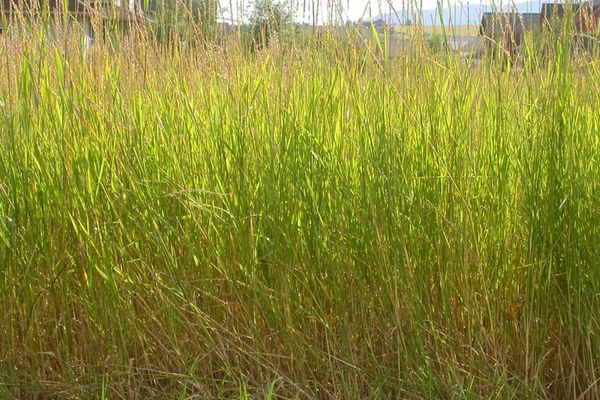
Scientific Name: Elytrigia repens
Quackgrass is a grass-like plant with tiny, needle-like leaves that grow in clumps and spread quickly, leaving a thick mat on the ground. They prefer soil that’s rich in nutrients and water, so they grow in areas with a lot of trees or other plants, such as parks or yards.
If you have quackgrass in your yard, it can overcrowd your garden and compete with the plants, causing them to wither. Pulling all of the roots out of the ground or using herbicides are the best ways to get rid of quackgrass.
15. Sheep’s sorrel
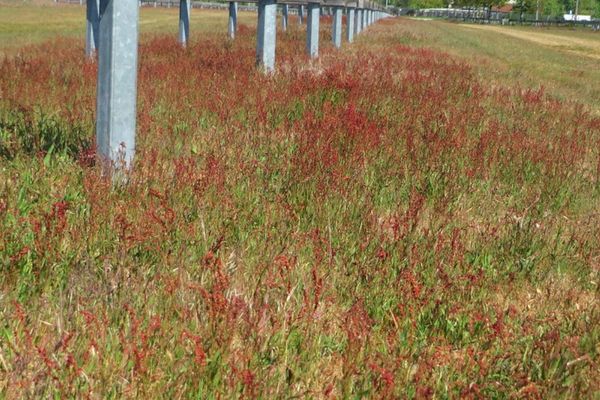
Scientific Name: Rumex acetosella
Sheep’s sorrel is a weed that grows in Colorado and can be difficult to eradicate. It has oblong arrow-shaped leaves with little clumps of flowers that grow on tall stalks and range in color from green to yellow to red.
It prefers cool, moist environments with slightly acidic soils. They’re also commonly found in lawns, burn sites, and roadsides, where they can quickly spread if not properly addressed. If your garden has become overrun with sheep’s sorrel, you can control it with herbicides.
